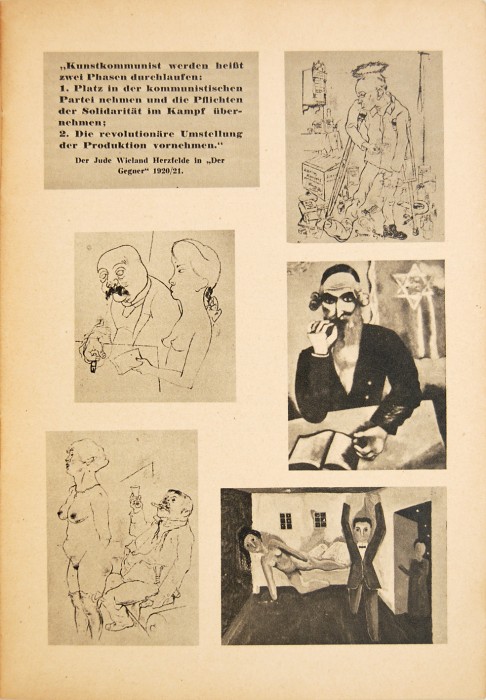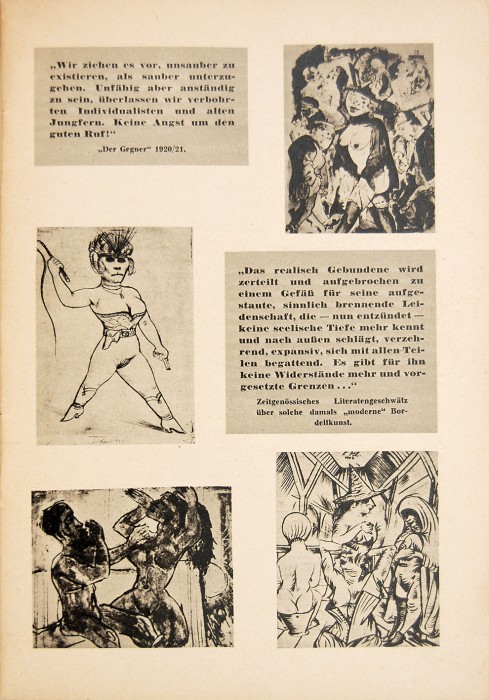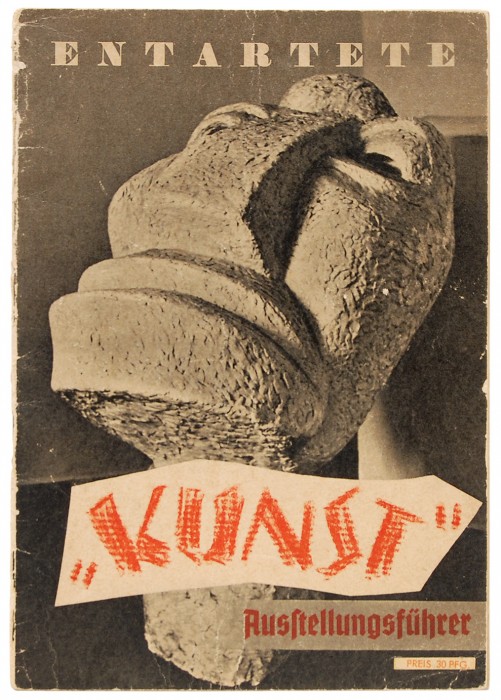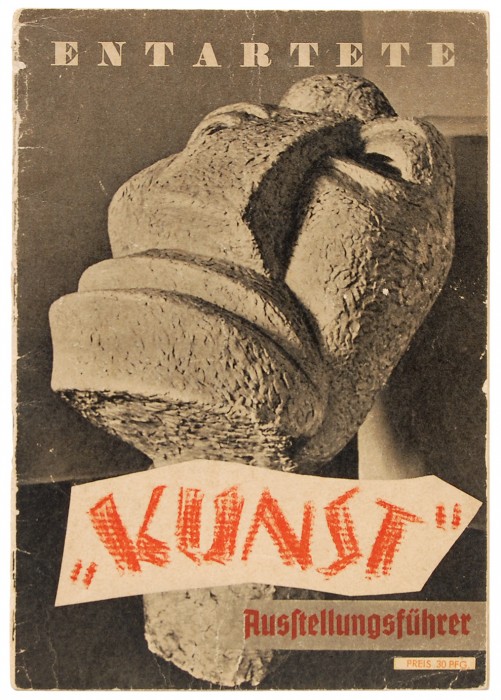
Programme for Entartete Kunst (Degenerate Art), first edition.
A rare survival, this is the programme that accompanied Entartete Kunst, the Nazi’s 1937 exhibition mocking “degenerate” avant-garde art. Targeting modern art, music, and literature was an important aspect of the Nazi campaign, and as early as 1930 museums were put under pressure to conform, with certain works taken off show and uncooperative directors removed. By 1933 the first defamatory exhibitions were being staged. “The purpose of this propaganda was the bringing-in-to-line (Gleichschaltung) of the arts within a Nazi state. Art’s only task was to illustrate the ideas of National Socialism and the glorification of the State” (MOMA).
These tactics culminated in 1937 with the widespread confiscation of art across Germany and the development by the Reichskammer für Bildende Künste (Reich Chamber of Visual Art) of the show Entartete Kunst (Degenerate Art) in Munich. The exhibition displayed works that were deemed insulting to religion, the state, or the German people; produced by Jews and other minorities; or evidence of foreign and “degenerate” influences such as modernism and expressionism, African culture, homosexuality, and communism. Pieces were crammed chaotically together in the exhibition space alongside derogatory graffiti-style comments and notes about how much the state had spent to obtain them. Among the 650 items were works by Otto Dix, Max Beckmann, Marc Chagall, George Grosz, Mondrian, Kandisnsky, and Paul Klee. Entartete Kunst became “the first traveling blockbuster show of the 20th century”, touring for two years across Germany and Austria and attracting 3 million visitors (Time). 1938 saw the opening of a sister exhibition, Degenerate Music, which targeted modern styles such as jazz.
Afterward, works that had been on exhibit in Entartete Kunst, along with thousands of other confiscated pieces, were added to party leaders’ personal collections or sold internationally, but many were publicly destroyed. (Philadelphia Museum of Art). The artists themselves were prohibited from producing new work. Those that could fled, while others continued working in secret and some Jewish artists were interned in concentration camps. Following the war a few items were found by the Russian Army and made their way to the Hermitage, and in 2010 several bronze sculptures from the exhibit were uncovered during the construction of an underground train line in Berlin. These were put on display partially restored, to emphasize both their original states and the damage inflicted during the war (Der Spiegel). The Entartete Kunst exhibition catalogue is rare on the market. An historically significant programme, it is a stark reminder of the fate of art and artists under totalitarian regimes.
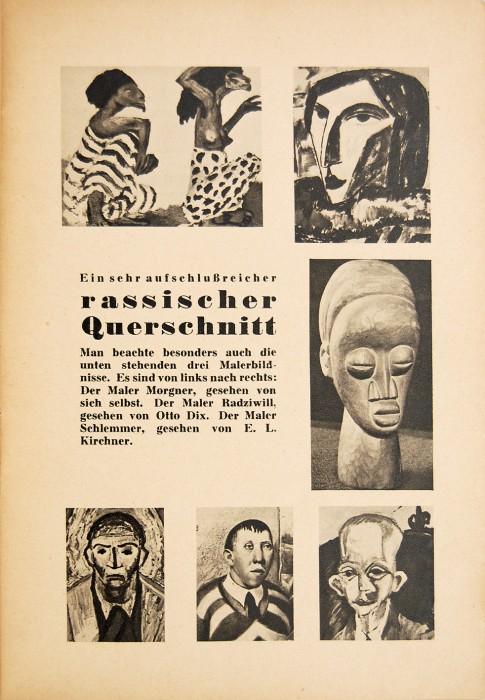
“A very revealing racial profile…”
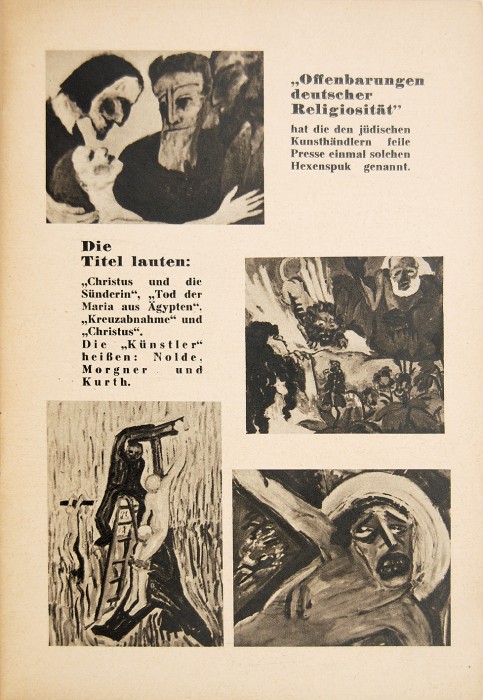
“Revelations of German religiosity…”
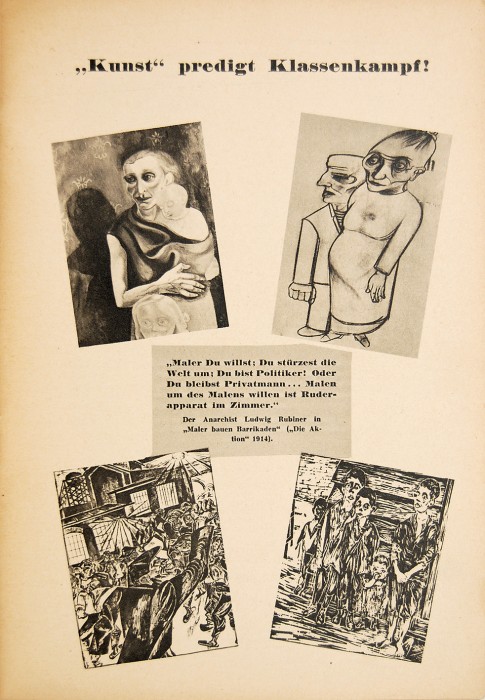
“‘Art’ preaches class struggle!”
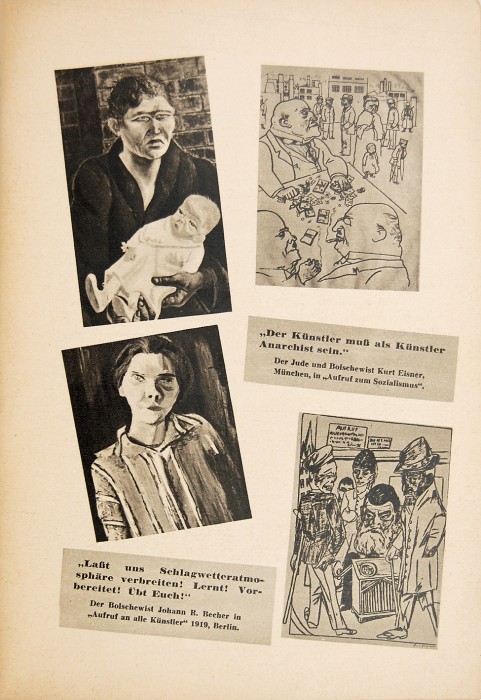
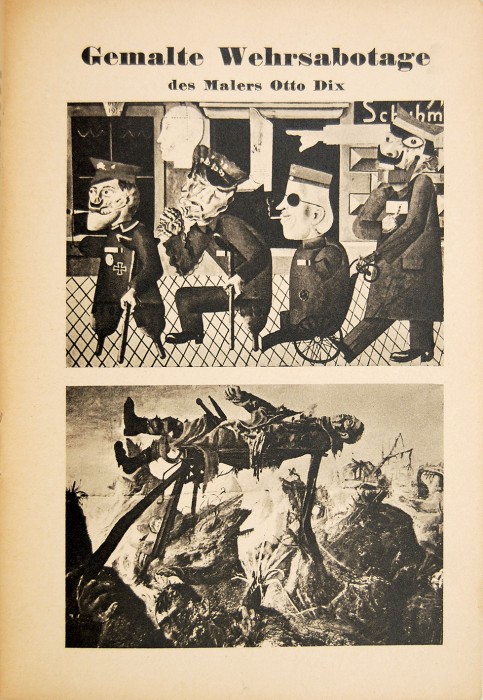
“Painted sabotage of Otto Dix”
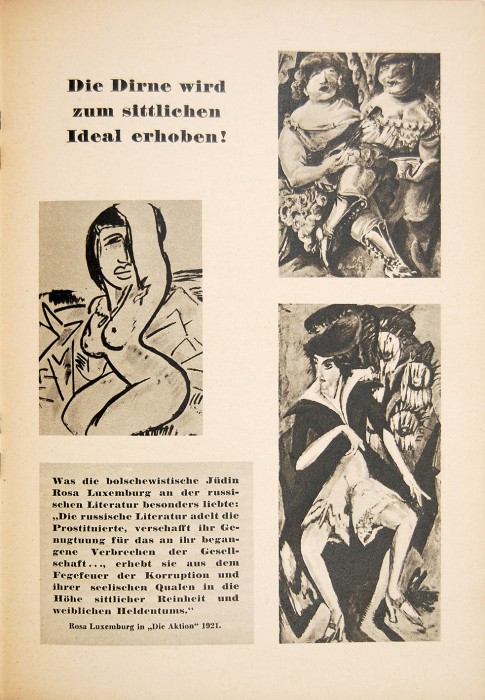
“The whore is elevated to a moral ideal!”
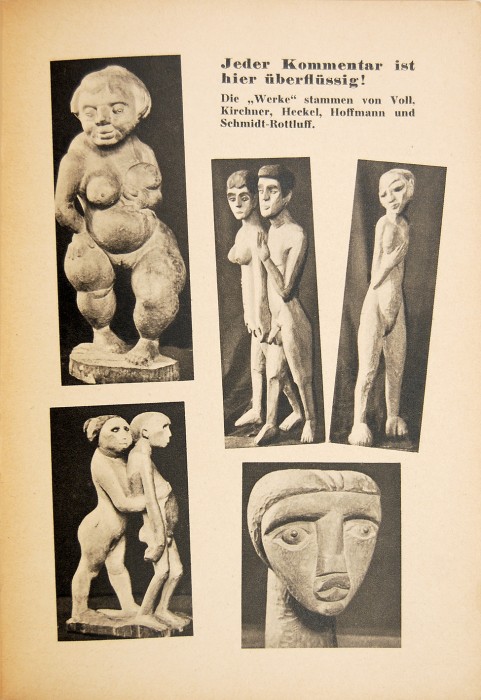
“Any comment here is superfluous!”
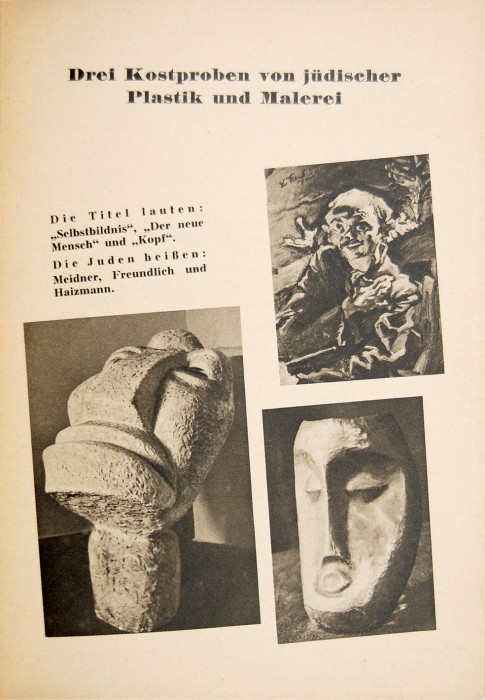
“Three samples of Jewish sculpture and painting…”
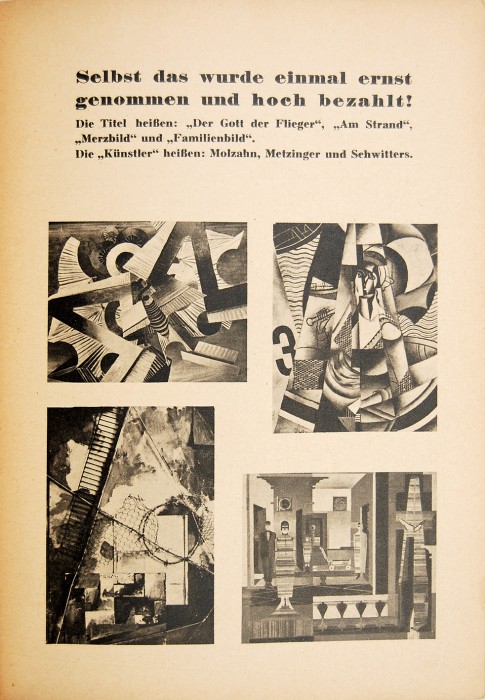
“Even this was once taken seriously and highly paid for!”
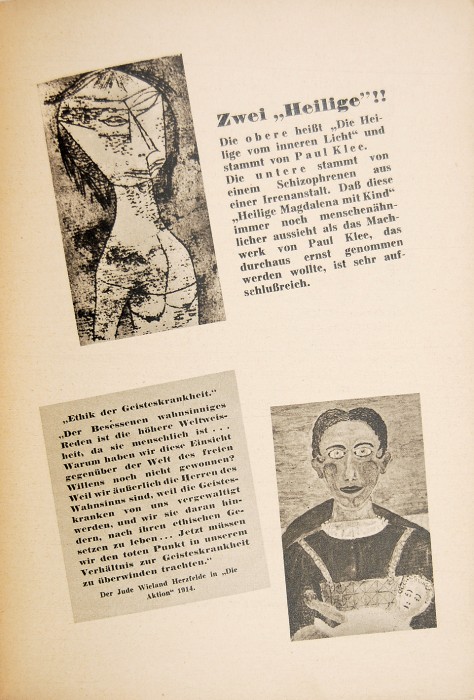
“Two ‘Saints’!”
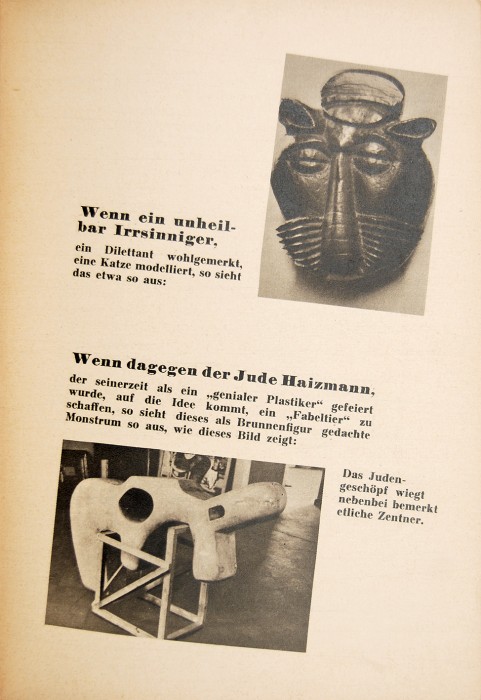
“If an incurably insane dilettante made a cat…”
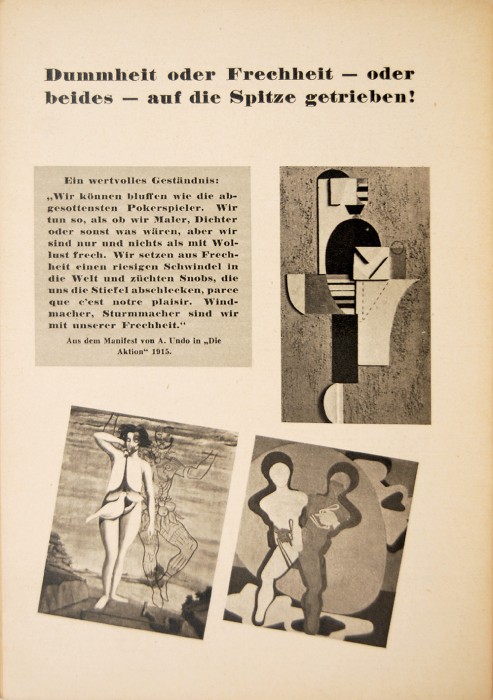
“Ignorance or stupidity – or both – to the extreme!”
